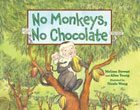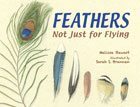
by Melissa Stewart
Narrative nonfiction. The words have a nice ring to them, don’t they?
Expository nonfiction? Not so much.
Rhymes with gory, purgatory, derogatory, lavatory. Gesh, it’s no wonder expository nonfiction gets a bad rap. And yet, plenty of great nonfiction for kids is expository. Its main purpose is to explain, describe, or inform.
As far as I’m concerned, this is a golden moment for expository nonfiction because, in recent years, it’s gone through an exciting transformation. Once upon a time, it was boring and stodgy and matter-of-fact, but today’s nonfiction books MUST delight as well as inform young readers, and authors are working hard to do just that. The expository books we’re creating feature engaging text, often with a strong voice, as well as dynamic art and design.
Here are ten of my recent favorites:
- A Black Hole Is Not a Hole by Carolyn Cinami DeCristofano
- Bone by Bone: Comparing Animal Skeletons by Sarah Levine
- Born in the Wild: Baby Mammals and Their Parents by Lita Judge
- Bugged: How Insects Changed the World by Sarah Albee
- Creature Features by Steve Jenkins & Robin Page
- Feathers: Not Just for Flying by Melissa Stewart
- Frogs by Nic Bishop
- Look Up! Bird-Watching in Your Own Backyard by Annette LeBlanc Cate
- Neo Leo by Gene Barretta
- Tiny Creatures: The Invisible World of Microbes by Nicola Davies

Sarah S. Brannen, illustrator
Charlesbridge, 2014
There is also a second kind of expository nonfiction books. Some people call them data books. I prefer to call them fast-fact books to distinguish them from the facts-plus books listed above.
Facts-plus books focus on facts as well as overarching ideas. In other words, they present facts and explain them. Fast-fact books focus on sharing cool facts. Period. They inform, and that’s all. Examples include The Guinness Book of World Records and The Time for Kids Big Book of Why. These are the concise, fact-filled books that groups of boys love to read together and discuss.
Some people don’t have a very high opinion of fast-fact books, and to be sure, they don’t build reading stamina or critical thinking skills. BUT they do entice many reluctant readers to pick up a book, and IMHO that alone makes them worthwhile.
Why do students need to be exposed to a diverse array of expository texts? Because it’s the style of nonfiction they’ll be asked to write most frequently throughout their school years and in their future jobs. Whether they’re working on a report, a thesis, a business proposal, or even a company newsletter, they’ll need to know how to summarize information and synthesize ideas in a way that is clear, logical, and interesting to their readers. Today’s expository children’s books make ideal mentor texts for modeling these skills.
